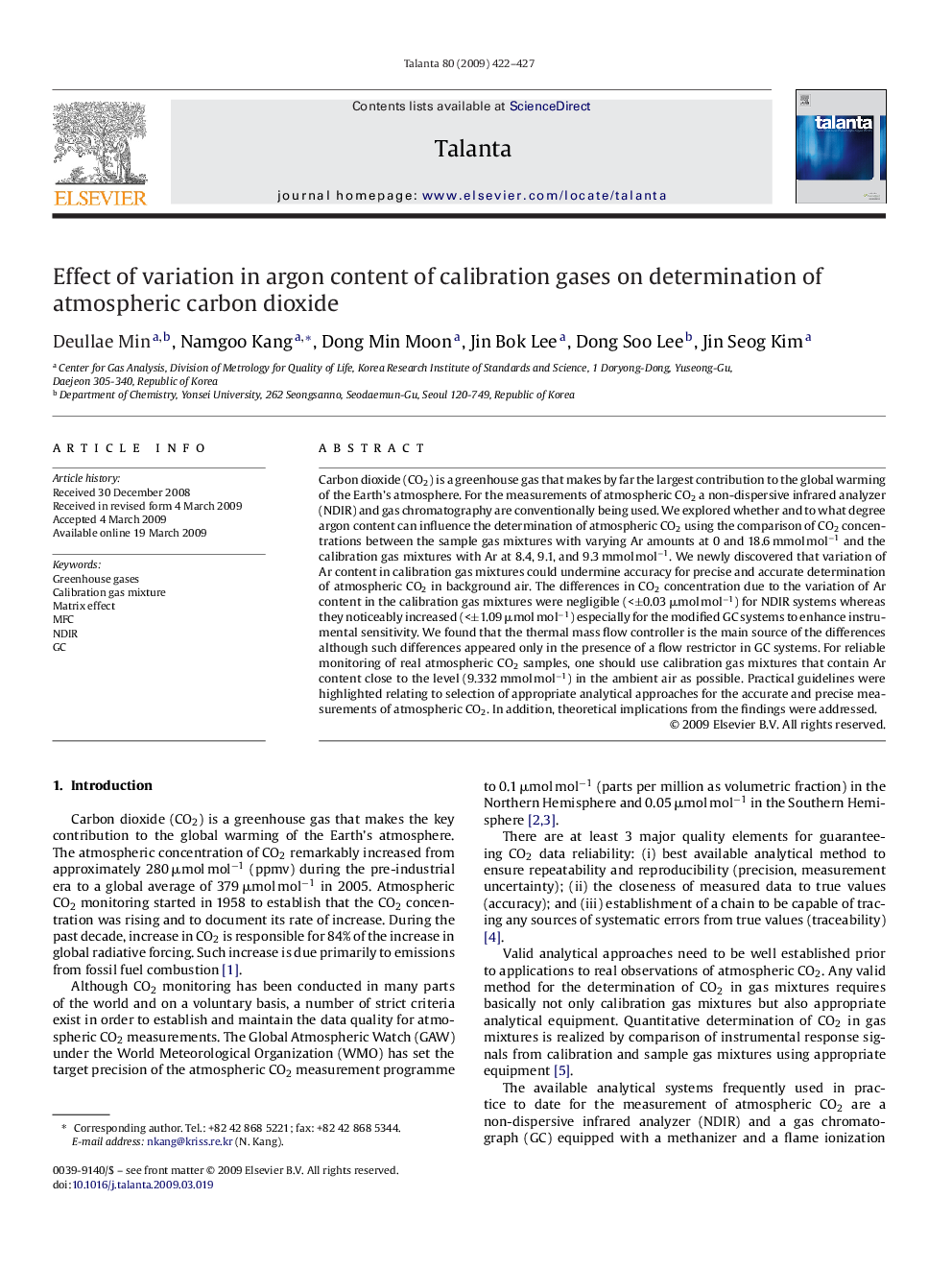| Article ID | Journal | Published Year | Pages | File Type |
|---|---|---|---|---|
| 1246707 | Talanta | 2009 | 6 Pages |
Carbon dioxide (CO2) is a greenhouse gas that makes by far the largest contribution to the global warming of the Earth's atmosphere. For the measurements of atmospheric CO2 a non-dispersive infrared analyzer (NDIR) and gas chromatography are conventionally being used. We explored whether and to what degree argon content can influence the determination of atmospheric CO2 using the comparison of CO2 concentrations between the sample gas mixtures with varying Ar amounts at 0 and 18.6 mmol mol−1 and the calibration gas mixtures with Ar at 8.4, 9.1, and 9.3 mmol mol−1. We newly discovered that variation of Ar content in calibration gas mixtures could undermine accuracy for precise and accurate determination of atmospheric CO2 in background air. The differences in CO2 concentration due to the variation of Ar content in the calibration gas mixtures were negligible (<±0.03 μmol mol−1) for NDIR systems whereas they noticeably increased (<±1.09 μmol mol−1) especially for the modified GC systems to enhance instrumental sensitivity. We found that the thermal mass flow controller is the main source of the differences although such differences appeared only in the presence of a flow restrictor in GC systems. For reliable monitoring of real atmospheric CO2 samples, one should use calibration gas mixtures that contain Ar content close to the level (9.332 mmol mol−1) in the ambient air as possible. Practical guidelines were highlighted relating to selection of appropriate analytical approaches for the accurate and precise measurements of atmospheric CO2. In addition, theoretical implications from the findings were addressed.
